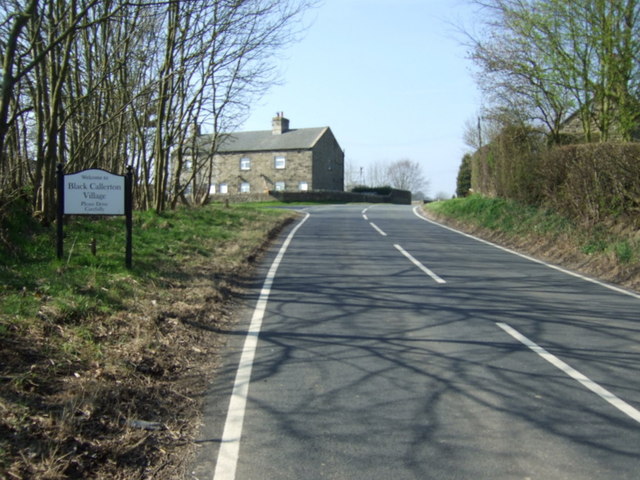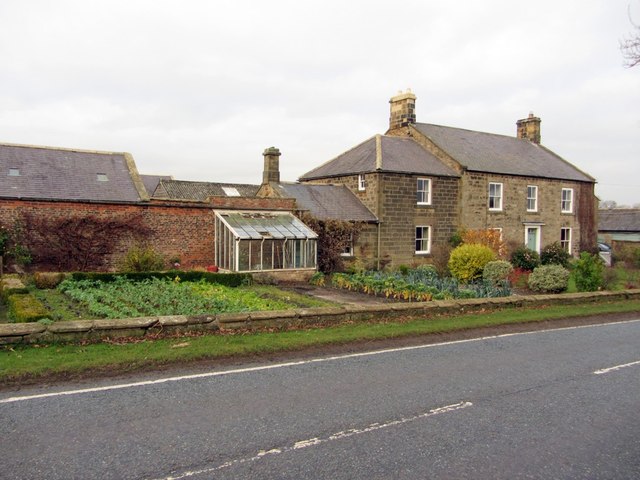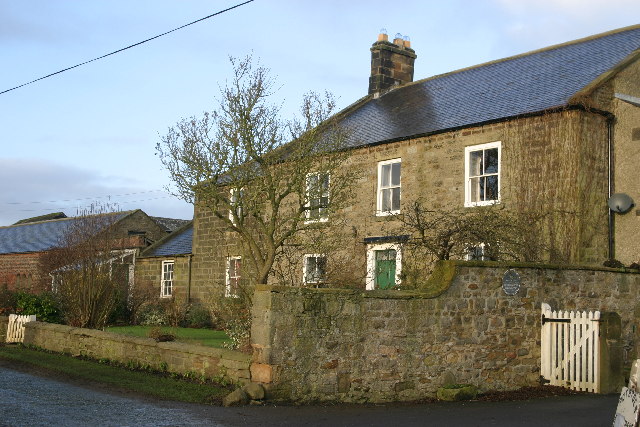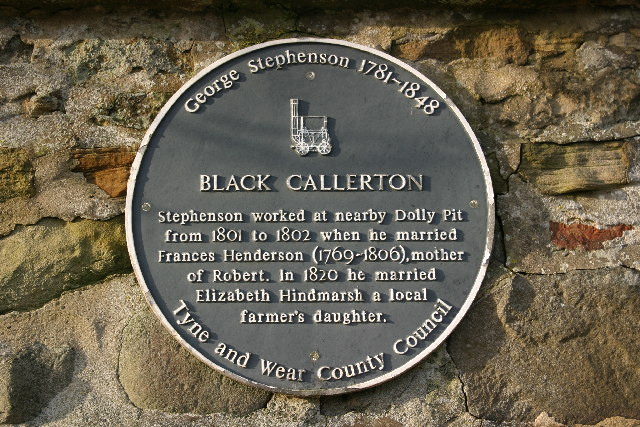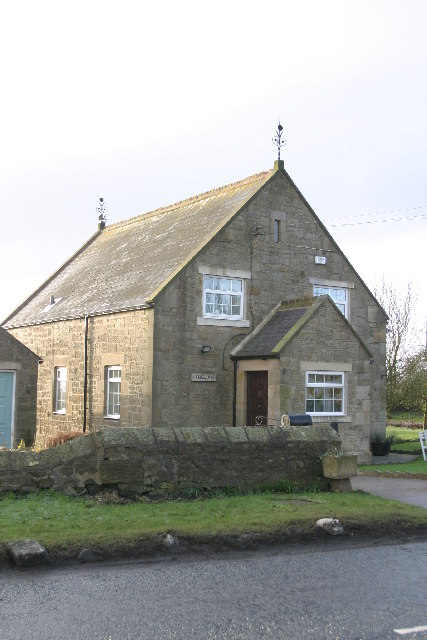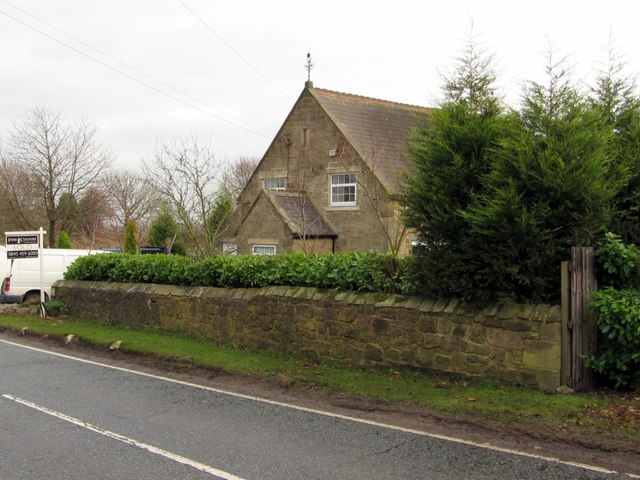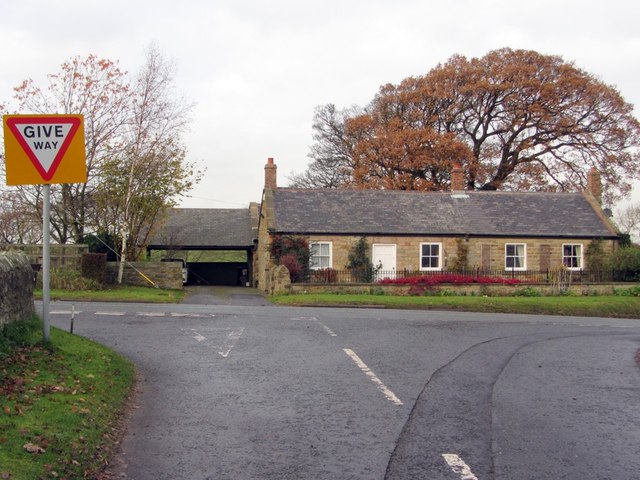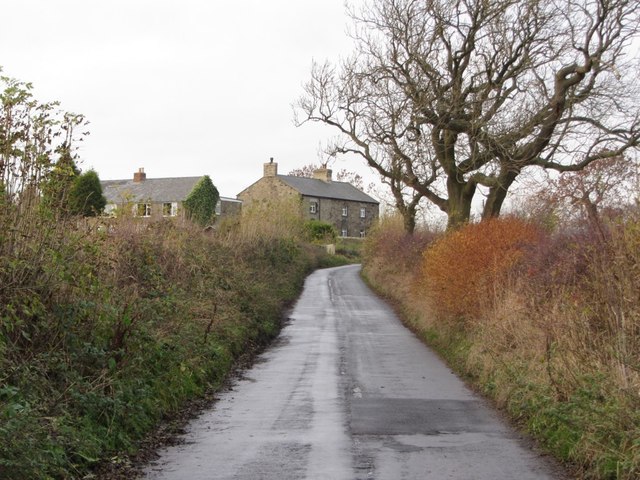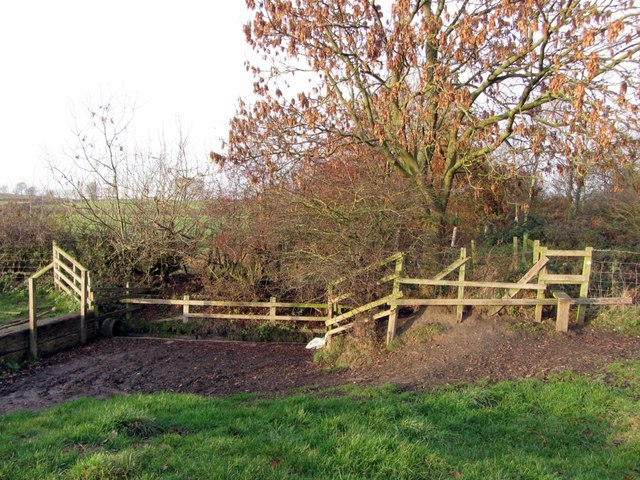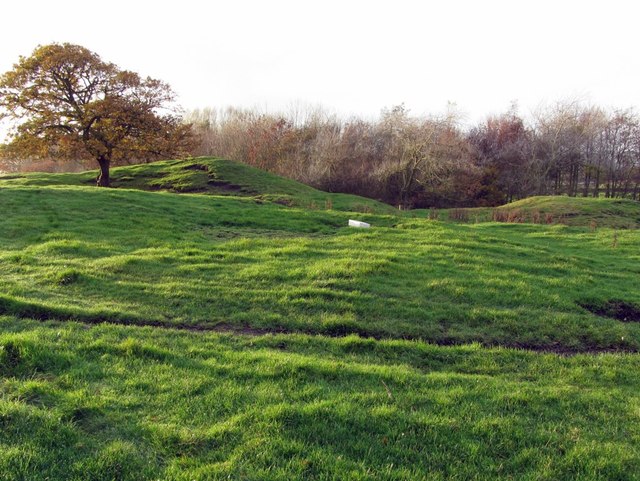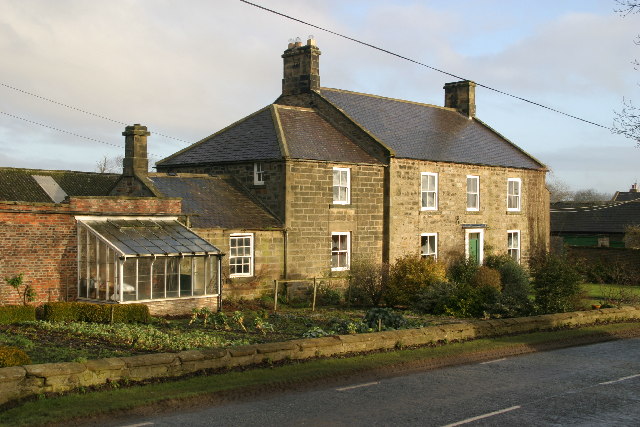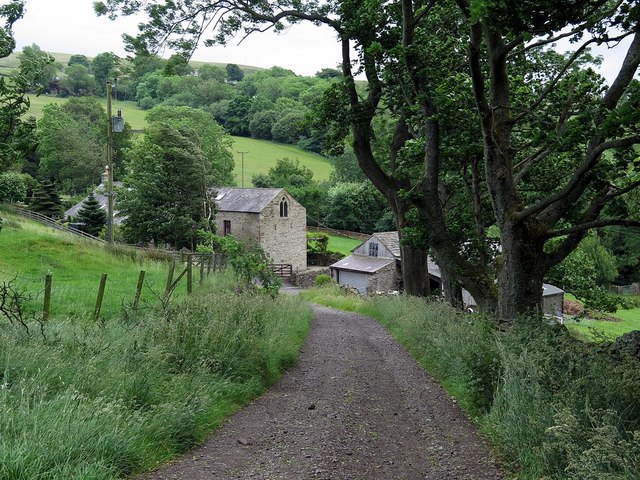Topics > Tyne and Wear > Newcastle upon Tyne > Black Callerton
Black Callerton
Black Callerton is a rural village within the City of Newcastle upon Tyne, located about 5 miles north-west of the city centre. The earliest reference to the settlment was in 1246, when Eustace Delaval made a grant of half the manor of Black Callerton.[1] In the 19th century coal mining became important in the area. George Stephenson, then aged about 20, was appointed as brakesman at the nearby Dolly pit, where he was responsible for driving and maintaining the winding mechanism. He lodged at Black Callerton where he met his wife to be, Frances Henderson (1769–1806), who was daughter of a local farmer. Callerton Colliery was in operation up to September 1948. Historically, Black Callerton was part of the ancient parish of Newburn in Northumberland, before being made part of the City of Newcastle.
CALLERTON, BLACK, a township, in the parish of Newburn, union and W. division of Castle ward, S. division of Northumberland, 6¼ miles (N.W.) from Newcastle-upon-Tyne; containing 158 inhabitants. It is situated not far distant from the road between Newcastle and Rothbury, and 3½ miles north-by-east from Newburn; and comprises 1,377 acres, of which 1,145 are arable, 197 meadow, 15 plantation, and 18 road. The rectorial tithes of the township have been commuted for a yearly rent-charge of £220, and for the vicarial a modus of £6 is paid.
Extract from: A Topographical Dictionary of England comprising the several counties, cities, boroughs, corporate and market towns, parishes, and townships..... 7th Edition, by Samuel Lewis, London, 1848.
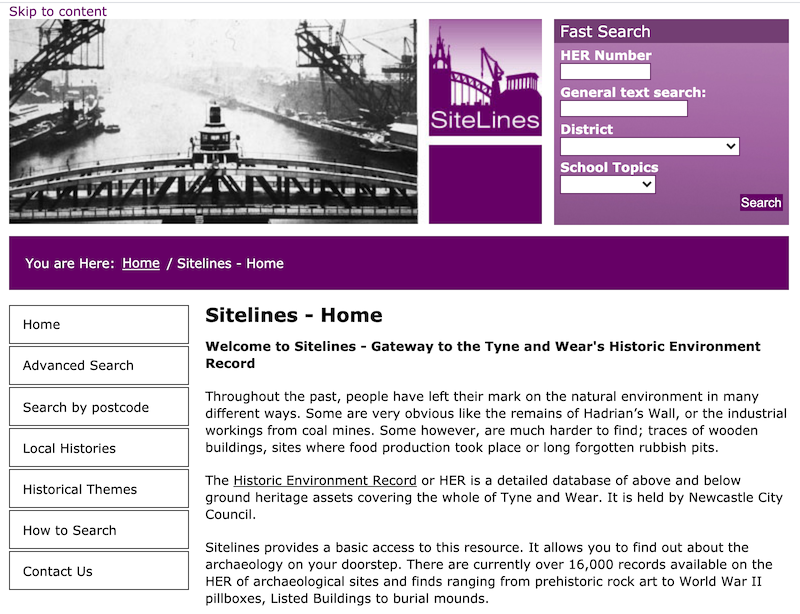
from http://twsitelines.info/SMR/1…
Tyne and Wear HER(1302): Black Callerton village
- "The earliest reference is 1246, when Eustace Delaval made a grant of half the manor of Black Callerton, comprising 12 bovates and 3 cottages. There were 10 tax- payers in …
Added by
Simon Cotterill

Co-Curate Page
Newburn Parish, 1848
- NEWBURN (St. Michael), a parish, in the union, and chiefly in the W. division, of Castle ward, but partly in the E. division of Tindale ward, S. division of Northumberland; …
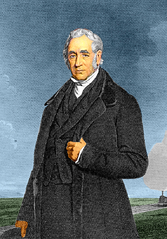
Co-Curate Page
George Stephenson (1781 - 1848)
- Overview Detailed Information George Stephenson was a famous engineer and inventor, considered to be "father of the railways". He was born in Wylam in Northumberland on 9th June 1781. In 1814, Stephenson …


from http://twsitelines.info/SMR/1…
Tyne and Wear HER(1302): Black Callerton village
- "The earliest reference is 1246, when Eustace Delaval made a grant of half the manor of Black Callerton, comprising 12 bovates and 3 cottages. There were 10 tax- payers in …
Added by
Simon Cotterill

Co-Curate Page
Newburn Parish, 1848
- NEWBURN (St. Michael), a parish, in the union, and chiefly in the W. division, of Castle ward, but partly in the E. division of Tindale ward, S. division of Northumberland; …

